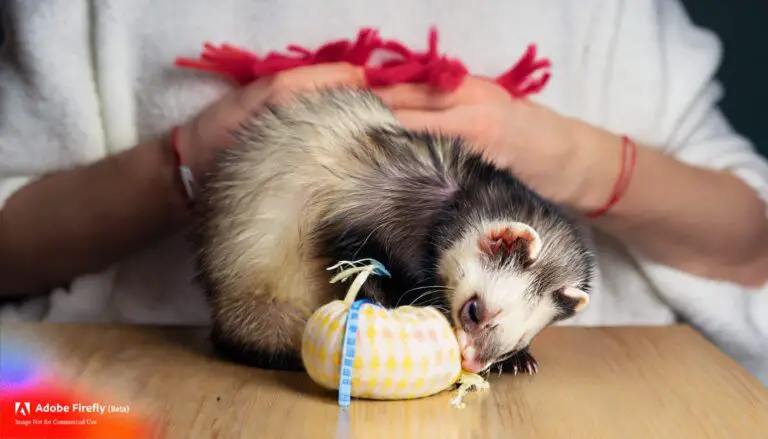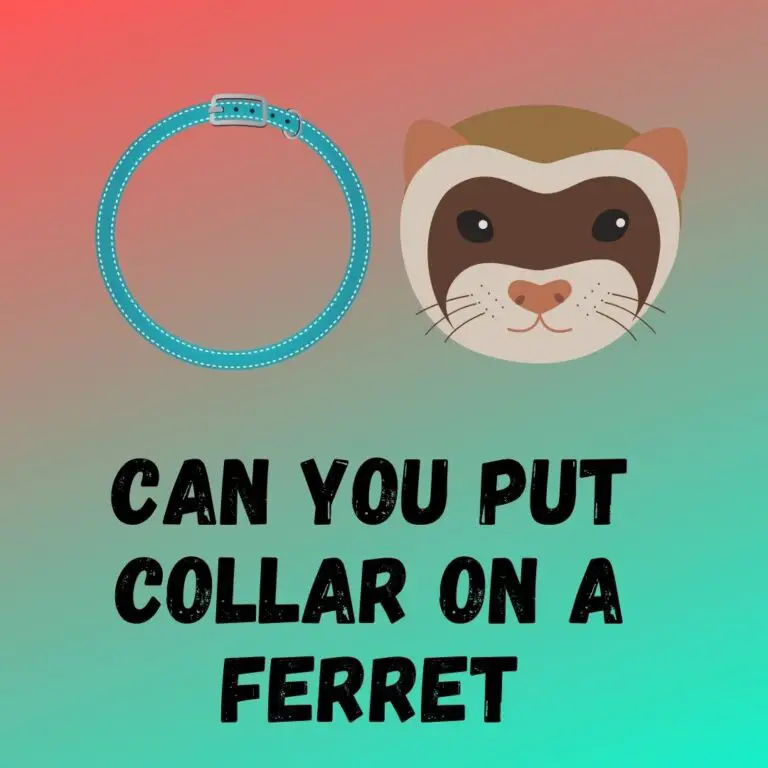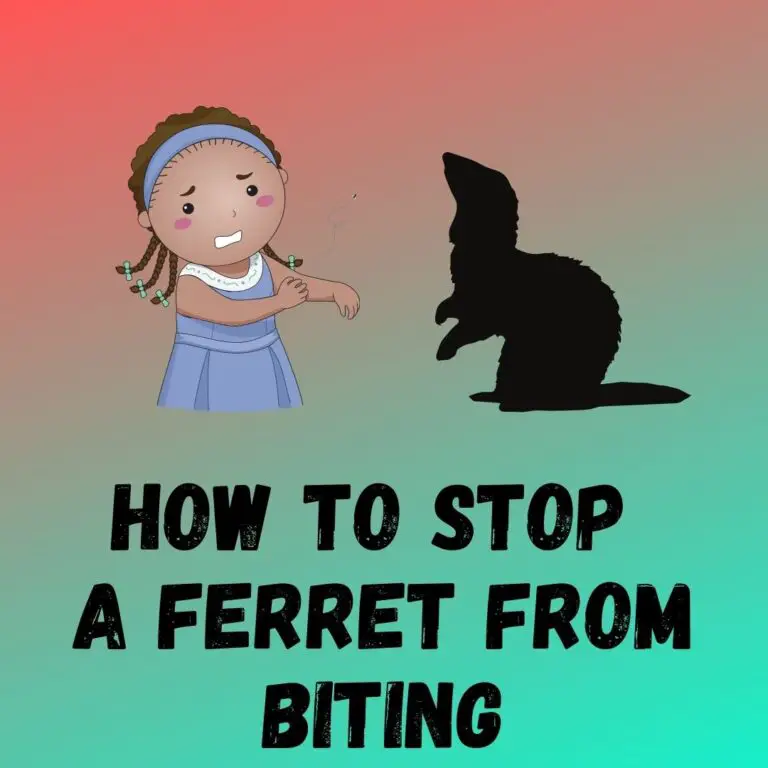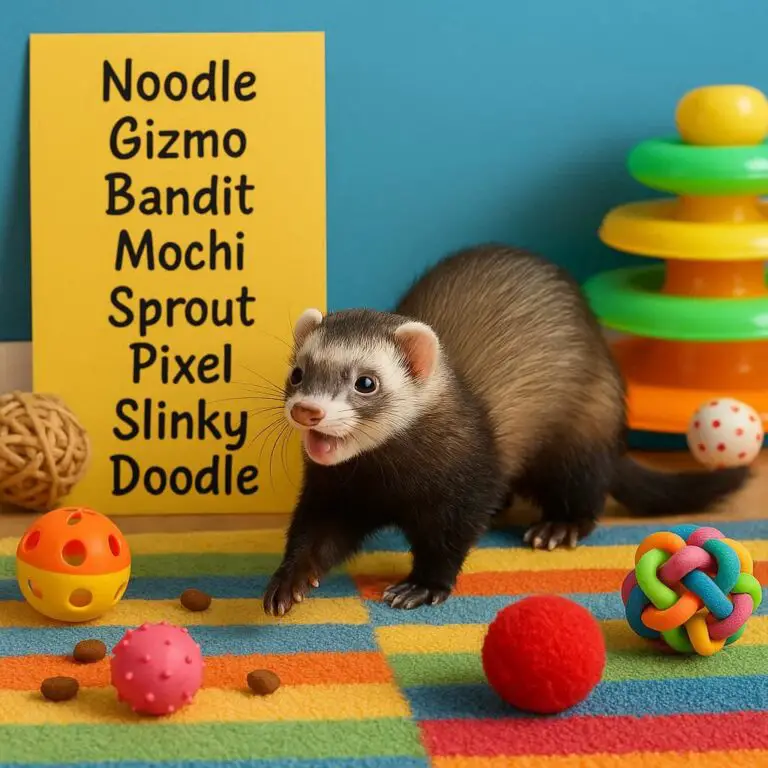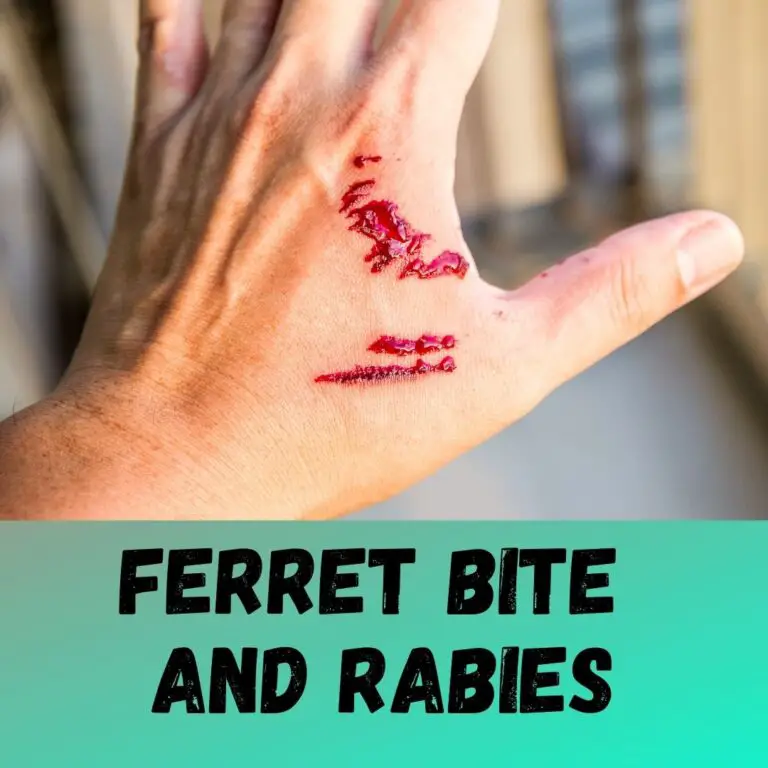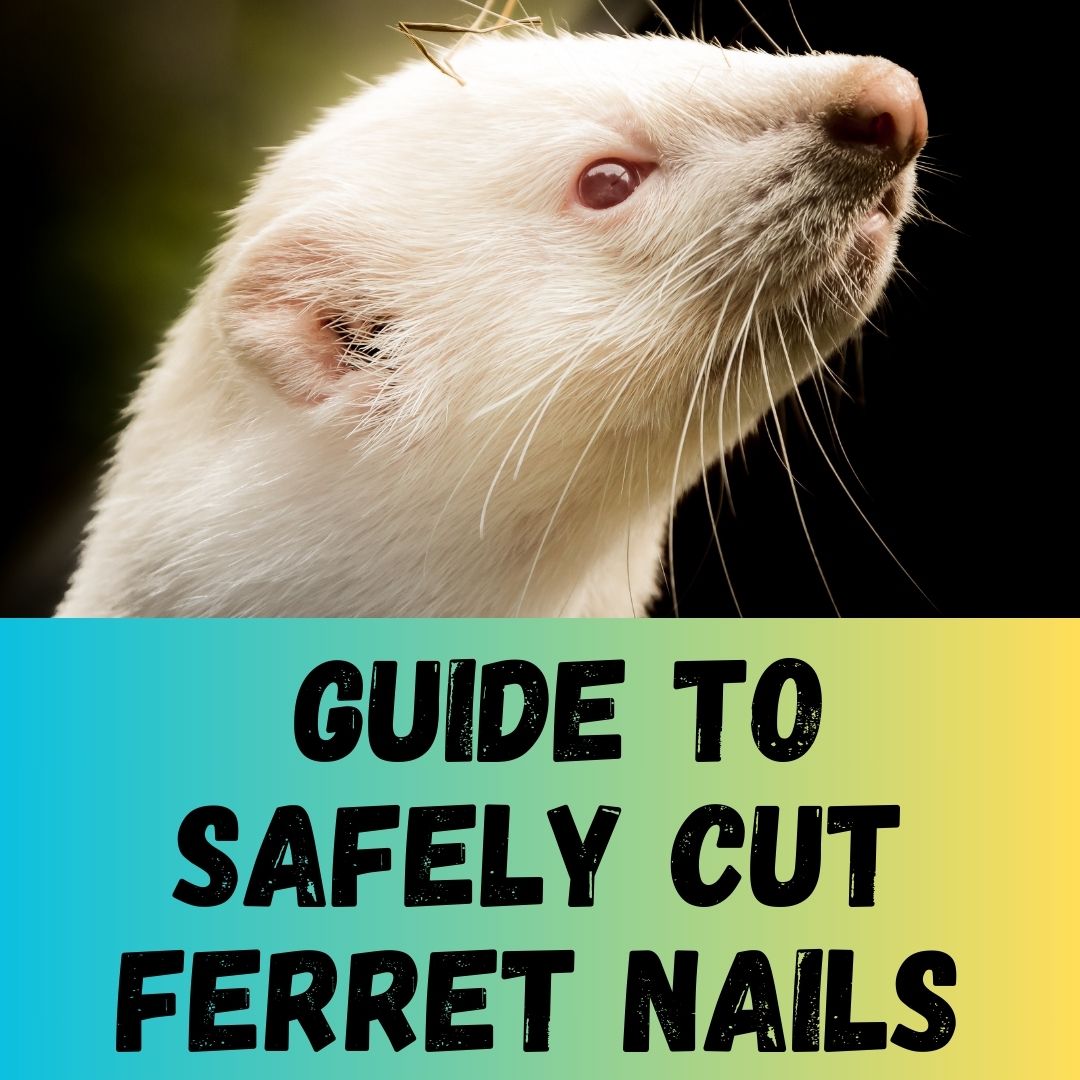
Hey there, fellow ferret lovers! If you’re a proud owner of these adorable little furballs, you know that keeping their nails in check is essential for their comfort and well-being. But let’s face it, cutting ferret nails can be a daunting task, especially if you’re new to it. Don’t worry though, I’ve got you covered! In this article, I’ll share with you my tried and tested tips on how to cut ferret nails like a pro. So, grab your clippers and let’s get started on keeping those nails trim and tidy for your furry friend!
Have you ever felt a little apprehensive about trimming your ferret’s nails? Trust me, I’ve been there too. But fear not, because today I’m going to walk you through a step-by-step guide on how to make this process a breeze. From choosing the right tools to mastering the technique, I’ll provide you with all the knowledge you need to confidently tackle this grooming task. So, let’s dive in and discover the secrets to perfectly manicured ferret nails!
Key Takeaways
- Cutting ferret nails is important for their health and well-being, as overgrown nails can cause injuries and discomfort.
- Trimming ferret nails helps maintain proper balance and alignment in their paws, preventing joint problems.
- Keeping ferret nails trimmed prevents damage to furniture and flooring.
- Regular nail trims contribute to fostering a stronger bond between owners and ferrets.
- Essential tools for cutting ferret nails include nail clippers, styptic powder, a towel or blanket for restraint, and treats for positive reinforcement.
- Proper preparation, gradual introduction to handling and touch, and careful trimming are key to a successful and stress-free nail trimming session.
Why is it important to cut ferret nails?
One of the most important aspects of caring for a ferret is ensuring their nails are properly trimmed. This may seem like a small task, but it plays a significant role in maintaining their overall health and well-being. In this section, I’ll explain why it’s important to cut ferret nails and the potential consequences of neglecting this grooming task.
Preventing Overgrown Nails and Associated Problems
Ferrets have a natural instinct to dig and climb, which can cause their nails to grow faster than they naturally wear down. Over time, these nails can become overgrown and pose several risks to your ferret’s health. Long nails can get caught on objects, leading to painful broken nails or even torn toes. Additionally, the sharp tips of overgrown nails can scratch themselves or you during playtime, causing unnecessary injuries.
Maintaining Proper Balance and Comfort
Trimming your ferret’s nails helps maintain the proper balance and alignment of their paws. Overgrown nails can throw off their natural gait, resulting in discomfort or even joint problems. By regularly trimming their nails, you can ensure that your ferret walks, runs, and jumps with ease, minimizing any potential discomfort or pain.
Preventing Damage to Furniture and Flooring
If you allow your ferret’s nails to become too long, they can cause damage to your furniture and flooring. Sharp claws can scratch and leave marks on your beloved possessions. By keeping their nails trimmed, you’ll protect your furniture and maintain a safe and comfortable environment for both you and your ferret.
Enhancing Bonding and Handling
Regular nail trims also contribute to fostering a stronger bond between you and your ferret. When their nails are maintained at a shorter length, you’ll be more comfortable handling them, which can lead to more frequent and positive interactions. It’s essential to approach nail trims with patience and gentleness, ensuring that your ferret associates the experience with trust and care.
Tools you’ll need for cutting ferret nails
When it comes to cutting your ferret’s nails, having the right tools is essential. Here are a few tools that will make the job easier and safer for both you and your furry friend:
- Nail Clippers: Invest in a good pair of nail clippers specifically designed for small animals, such as ferrets. These clippers are usually small in size with a sharp and curved blade, making it easier to trim their tiny nails.
- Styptic Powder: Accidents happen, and sometimes you may accidentally cause a small nick or cut while trimming your ferret’s nails. Styptic powder is a clotting agent that helps stop bleeding quickly. It’s always a good idea to have it on hand, just in case.
- Towel or Blanket: Ferrets can be wiggly and may not want to stay still while you trim their nails. Wrapping them in a soft towel or blanket can help restrain them gently, making it easier for you to perform the nail trimming.
- Treats: Positive reinforcement is key to making nail trimming a positive experience for your ferret. Have their favorite treats ready to reward them during and after the trimming session. This will help create a positive association with the process.
Remember, using proper tools ensures a safe and stress-free nail trimming experience for both you and your ferret. It’s important to choose tools specifically designed for small animals to avoid any accidents or discomfort.
How to prepare your ferret for nail trimming
When it comes to trimming your ferret’s nails, proper preparation is key to ensuring a smooth and stress-free experience for both you and your fuzzy companion. Here are a few steps you can take to prepare your ferret for nail trimming:
- Choose the right time and location: Finding the right time and place to trim your ferret’s nails is crucial. Pick a time when your ferret is calm and relaxed, such as after playtime or a meal. Also, choose a quiet and well-lit area where you have enough space to comfortably handle your ferret.
- Gather the necessary tools: Before you begin, make sure you have all the tools you’ll need for the nail trimming session. These include:
- Nail clippers: Opt for nail clippers specifically designed for small animals like ferrets. These clippers will provide better control and reduce the risk of accidental injury.
- Styptic powder: In case you accidentally trim your ferret’s nail too short and it starts bleeding, styptic powder can help stop the bleeding quickly.
- Towel or blanket: Having a towel or blanket on hand can provide a sense of security for your ferret during the nail trimming process.
- Treats: Positive reinforcement is essential to create a positive association with nail trimming. Have some treats ready to reward your ferret for their cooperation.
- Gradually introduce handling and touch: Ferrets can be sensitive about their feet being touched. Start by gently touching your ferret’s paws and extending their nails. Reward them with treats and praise to help them associate these interactions with positive experiences.
- Familiarize your ferret with the tools: Allow your ferret to become familiar with the nail clippers by placing them near their paws and rewarding them for calm behavior. This will help reduce any anxiety they may have towards the clippers.
By taking these steps to prepare your ferret for nail trimming, you can help minimize stress and ensure a successful grooming session. Remember to be patient, use positive reinforcement, and always prioritize your ferret’s comfort and safety.
Step-by-step guide to cutting ferret nails
Now that you have gathered all the necessary tools, it’s time to learn how to cut your ferret’s nails. Follow these steps for a successful nail trimming session:
- Choose the right time and location: Pick a time when your ferret is calm and relaxed. Avoid busy or noisy environments that could cause stress or distractions. Find a quiet room where you can comfortably restrain your ferret for the nail trimming process.
- Prepare the tools: Make sure you have your nail clippers, styptic powder, a towel or blanket for restraint, and some tasty treats on hand. Having everything ready before you begin will help streamline the process and minimize any potential stress for both you and your ferret.
- Gradually introduce handling and touch: Before diving straight into nail trimming, it’s important to gradually get your ferret used to being handled and touched. Start by gently holding your ferret’s paws and providing positive reinforcement with treats. This will help them become more comfortable and cooperative during the nail trimming process.
- Familiarize your ferret with the tools: Let your ferret see and sniff the nail clippers to familiarize them with the tool. This will help reduce any fear or anxiety they may have towards it. You can even try touching their paws with the closed nail clippers to get them accustomed to the sensation.
- Restrain your ferret: Wrap your ferret snugly in a towel or blanket, making sure to leave one paw exposed at a time. This will prevent them from squirming too much and make it easier for you to access their nails.
- Trim the nails: Take one paw at a time and gently push the pad to extend the nails. Carefully and slowly trim off the curved tip of the nail, making sure to avoid the quick (the pink part within the nail). If you accidentally cut the quick and it starts bleeding, immediately apply the styptic powder to stop the bleeding.
- Offer treats and praise: After successfully trimming each nail, reward your ferret with a treat and lots of praise. This positive reinforcement will associate the nail trimming experience with something positive and help build trust between you and your ferret.
Tips for a successful nail trimming session
Trimming your ferret’s nails can be a challenging task, but with the right approach and some helpful tips, you can make it a successful and stress-free experience. Here are my top tips for a smooth nail trimming session:
1. Choose the Right Time and Location
Pick a time when your ferret is relaxed and in a calm state. Avoid trimming their nails immediately after playtime or when they’re feeling energetic. Find a quiet and well-lit location where you can comfortably handle your ferret without distractions.
2. Prepare the Necessary Tools
Gather all the tools you’ll need before you begin the nail trimming session. This includes ferret-specific nail clippers or human nail clippers with a straight edge, styptic powder or cornstarch to stop bleeding in case you accidentally cut the quick, and treats or rewards to reinforce positive behavior.
3. Gradually Introduce Handling and Touch
If your ferret is not accustomed to being handled or having their paws touched, it’s essential to introduce them to these sensations gradually. Start by simply holding and stroking their paws for a few seconds each day. This helps them become more comfortable with the sensation and reduces their anxiety during nail trimming.
4. Familiarize Your Ferret with the Nail Clippers
Allow your ferret to become familiar with the nail clippers before attempting to trim their nails. Show them the clippers and let them sniff and explore them. This helps to desensitize them to the sight and sound of the clippers, making the actual trimming process less intimidating.
5. Restrain Your Ferret with a Towel or Blanket
To ensure your ferret stays still during the nail trimming session, you can gently wrap them in a towel or blanket. This helps to provide a sense of security and prevents them from squirming or escaping. Remember to leave their paw out for you to work on one at a time.
6. Trim the Nails Carefully
When trimming your ferret’s nails, be cautious not to cut the quick – the sensitive part inside the nail. Cut small portions of the nail at a time and use a straight cut to minimize the risk of injury. If you accidentally cut the quick and bleeding occurs, immediately apply styptic powder or cornstarch to stop the bleeding.
Conclusion
Cutting your ferret’s nails can be a daunting task, but with the right approach, it can become a stress-free experience for both you and your furry friend. By following the step-by-step guide provided in this article, you’ll be equipped with the knowledge and techniques to confidently trim your ferret’s nails.
Remember to choose a suitable time and location, prepare the necessary tools, and gradually introduce handling and touch to your ferret. Familiarize them with the nail clippers and use a towel or blanket to restrain them during the trimming process. Always exercise caution when trimming their nails, ensuring that you avoid cutting the quick to prevent any discomfort or bleeding.
By implementing these tips, you’ll be able to maintain your ferret’s nail health and prevent any issues that may arise from overgrown nails. Regular nail trims are essential for your ferret’s overall well-being, so don’t hesitate to give it a try. With practice and patience, you’ll become a pro at cutting your ferret’s nails in no time.
Frequently Asked Questions
Q: What is the article about?
A: The article is a step-by-step guide on how to cut your ferret’s nails.
Q: What are the key points to remember for nail trimming?
A: Choose the right time and location, prepare necessary tools, familiarize your ferret with the nail clippers, and use a towel or blanket to restrain them.
Q: How should I handle my ferret during nail trimming?
A: Gradually introduce handling and touch to make your ferret comfortable with the process.
Q: How can I avoid cutting the quick of my ferret’s nails?
A: Trim the nails carefully and avoid cutting the quick, which may cause bleeding.
Q: What should I do if I accidentally cut the quick?
A: Use styptic powder or cornstarch to stop the bleeding if the quick is accidentally cut during nail trimming.


